A Review: Out of Line: New Works by Teri Dryden
at B. Deemer Gallery, Louisville
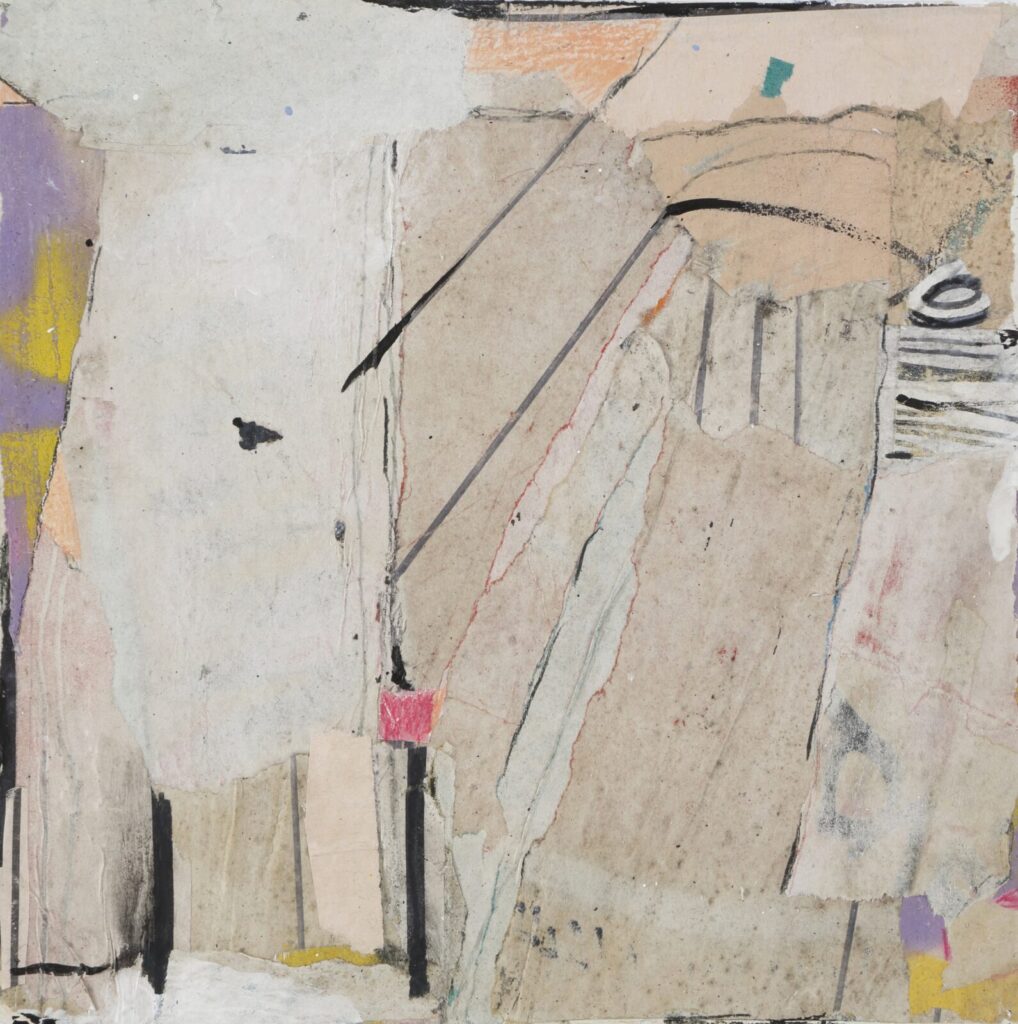
Abstraction, unlike figuration, is enigmatic, fleeting, and, in some cases, uncertain. Abstract artworks seem to channel the human condition in ways that figurative works cannot. They connect with viewers on a purely visual level; there is no narrative to be read or bodies to identify. On the contrary, abstraction thrives purely on emotion and instinct. Teri Dryden’s abstract paintings and collages offer viewers a moment to reflect and reevaluate themselves and the world they occupy with rich colors and forms. Dryden’s art serves as a remedy for the hustle and bustle of daily life—a breath of fresh air, as it were.
Out of Line, an exhibition of some of Dryden’s most recent artistic output at Louisville’s B. Deemer Gallery, showcases the artist’s dedication to abstraction, medium, and color, specifically the ways in which color is perceived and internalized in viewers.
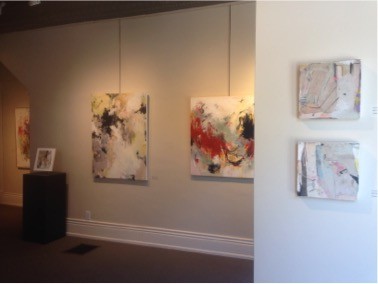
Dryden received an undergraduate degree in theatre from Towson University before touring with the Ringling Brothers and Barnum & Bailey Circus as a clown for two years. She moved to Los Angeles thereafter and was an accomplished stage actress, but she quit acting after the birth of her first child. Dryden maintained an interest in self-expression and turned to painting and drawing—after a brief exploration in quilt making—for creative release. She now resides in Louisville and is represented by galleries in Kentucky and Mississippi, though she continues to show work across the nation.
Dryden begins the majority of her paintings with a single line and builds them up in a series of reactions to the medium and the individual marks she makes; Viewers can easily determine how materials are applied. It is evident Dryden does not simply brush and drip paint onto her canvases; she also utilizes reductive techniques such as sanding and sgraffito, a technique of scratching through a surface to reveal a lower layer of a contrasting color.
In addition, the varied opaqueness and transparency of her paints create a sense of depth capable of spurring a multitude of interpretations. Indeed, Dryden’s paintings function as planes for viewers to look at and intake. The records of her actions—those marks always at the fore in her paintings—offer a sense of directionality so that viewers survey the entirety of each canvas in constant movement. Some of the artworks in Out of Line are inspired by Dryden’s recent journey to India and her engagement with India’s visual culture as well as the Holi festival. There, she collected materials from her daily activities that were to be incorporated into her art upon her return home.
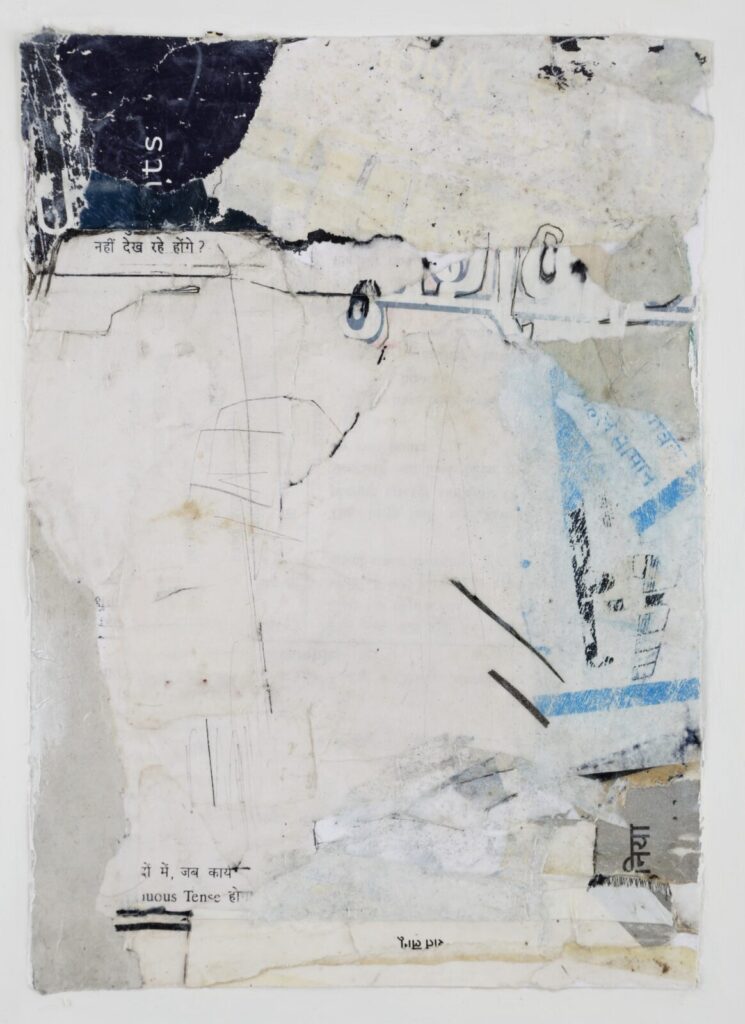
Dryden undeniably invokes certain well-known figures of art history. Her emphatic treatment of the canvas’s surface is suggestive of paintings by abstract expressionists such as Joan Mitchell, and Lenore “Lee” Krasner -particularly her broad, vivacious brushstrokes. Yet, the shapes she creates and their interrelationships within the canvas’s frame alludes to paintings by Clifford Still, who invoked the vast stretches of land of his native North Dakota through from and color. Dryden’s most abstract paintings, with their soft violets, blues, and greens, capture the essence of natural light and terrains that prevail in locations like Los Angeles and Louisville.
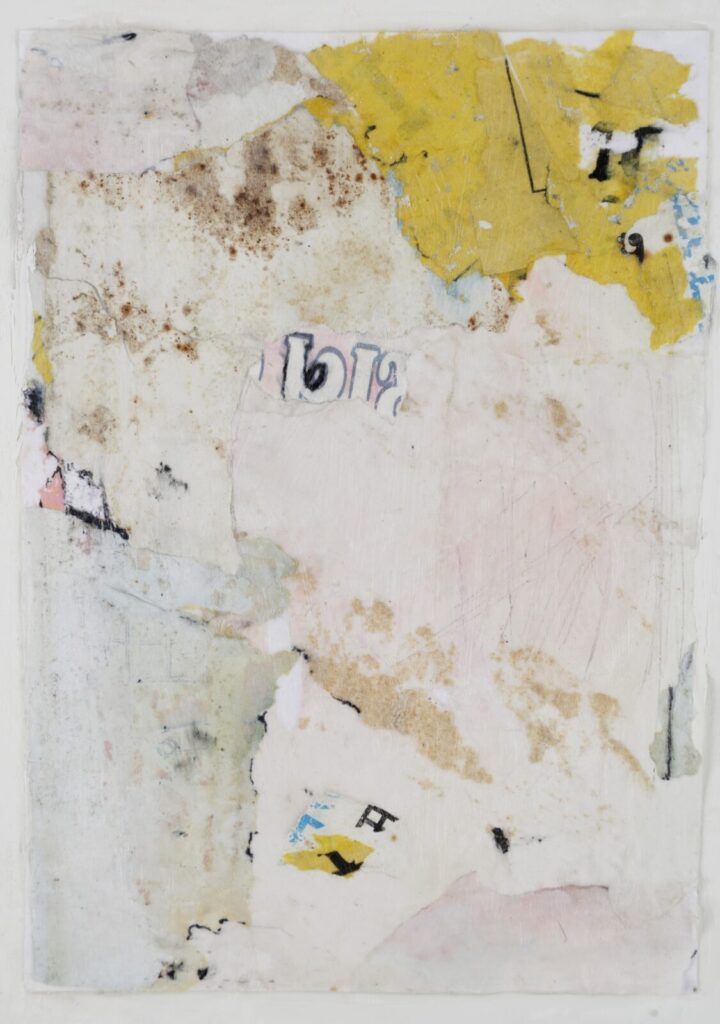
There are certain examples in Out of Line that borrow techniques from the likes of neo-Dadaists, such as Jasper Johns and Robert Rauschenberg, who used quotidian imagery and materials to marry art and life. Johns prepared the surface of his iconic American flag paintings with newspaper clippings before applying paint. In a similar manner, certain examples in Out of Line, such as Sun Gate, contain fragments of posters, magazines, and newspapers that represent the ways in which Dryden’s life experiences permeate her art.
In this sense, Dryden’s creative process begins not in her studio but in the world she (and we) roams. Rauschenberg believed that:
There is no reason not to consider the world as a gigantic painting.
Dryden seems to share this sentiment. With insinuations to such figures, Dryden seemingly approaches her art making academically.
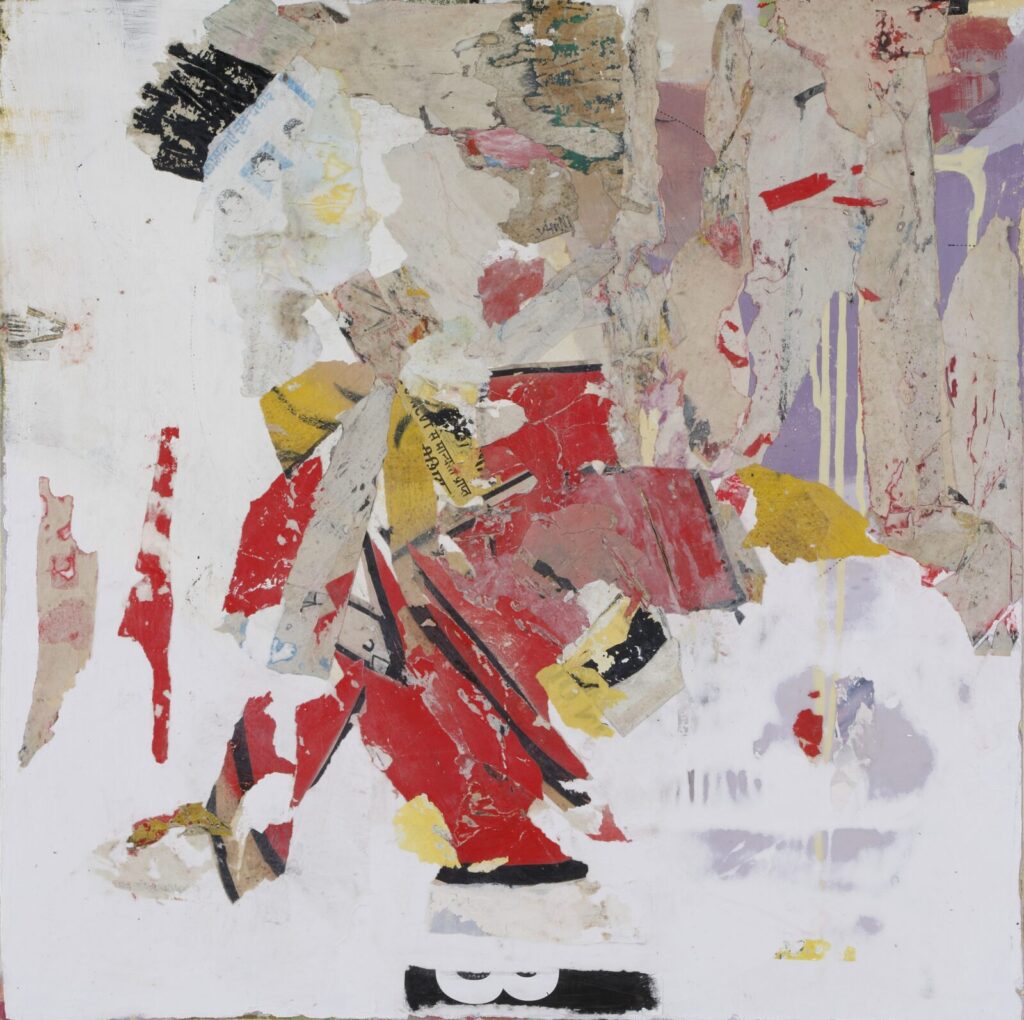
Dryden breaks most poignantly from these historical precedents when she includes materials accumulated from her time spent in India, as well as other mediums, into her art, which subsequently become collages and mixed media pieces. Especially in works like Rishpal’s India where portraits of Indian people and stylized words from the Hindi language appear, Dryden emphasizes the parity of cultures that are all too often distinguished by economic and political difference.
In the most refined examples of Dryden’s collages, it is unclear whether her materials derive from America, India, or anywhere else, a testament to both comparable aesthetic trends on a global scale and the artist’s ability to render them equal. These are completed on either panel or paper and can be presented on walls or, as in the case of Pink City, on pedestals. The edges and overall condition of Dryden’s collages and mixed media pieces are awry and more uneven than her paintings—indeed, these represent fragments torn from Dryden’s life and creative practice.
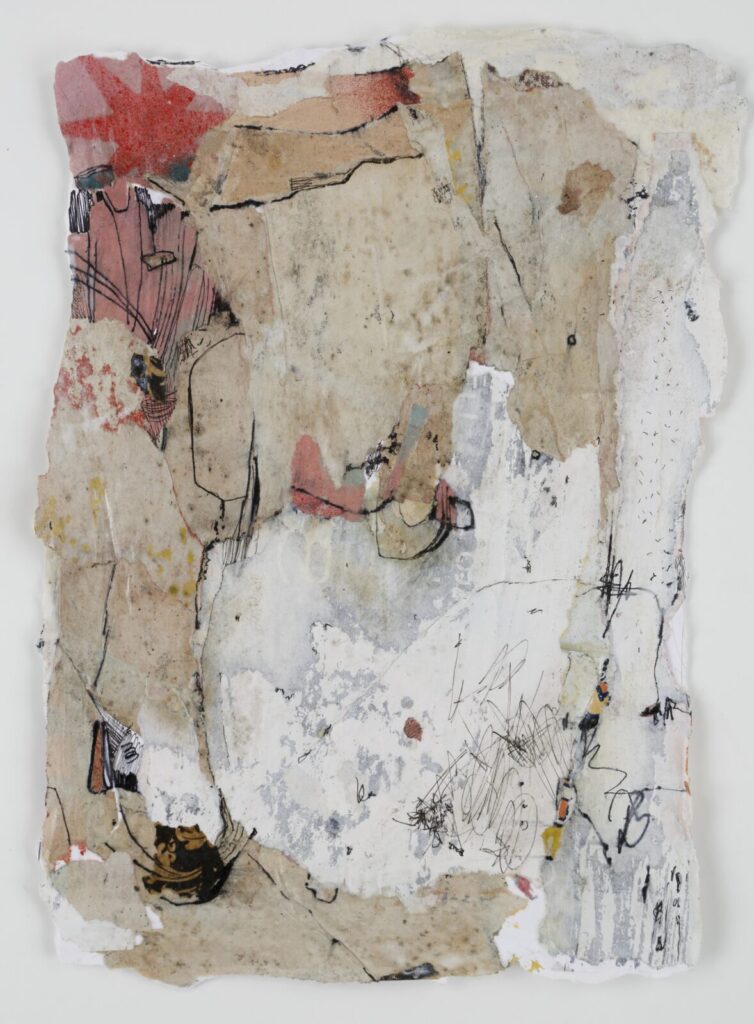
Out of Line is thus informed by art historical movements, but earns its distinction from its celebration of global communities. Consequently, this exhibition is arguably comprised of two separate bodies of work. On the one hand, there are objects that can be classified strictly as paintings: these are the abstractions that showcase Dryden’s intuition and patience in regard to process. On the other, her collages and mixed media pieces exemplify her interest in foreign cultures and her aptitude for allowing her experiences to influence the subject matter of her art. It is as if some of Dryden’s twenty-five objects displayed in B. Deemer Gallery represent her studio practice while others illustrate her life away from the easel. This makes for a compelling exhibition, as divergent as the selected works may seem.
Viewers are able to consider the ways in which combinations of Dryden’s techniques, color palettes, and materials can invoke multiple interpretations. Out of Line effectively characterizes Dryden as an artist with a range of abilities. Yet this exhibition may leave some wondering if a more condensed selection of objects would more prudently illustrate Dryden’s most distilled ways of art making. If the gallery were filled with only her collages, let’s say, perhaps themes of biculturalism and globalization would more fully prevail. Instead, we go back and forth between Dryden’s intimate explorations of color and the eye-opening takeaways from her time abroad.
Out of Line: New Works by Teri Dryden is on view through July 5, 2017 at B. Deemer Gallery in Louisville, KY.




